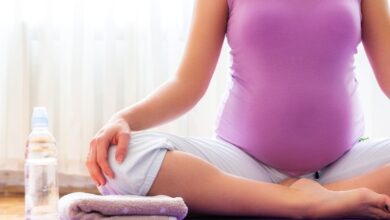Pregnancy is a time of immense physical and emotional change, and maintaining a fitness routine can play a crucial role in ensuring a healthy pregnancy. However, it’s essential to choose exercises that are safe and beneficial for both the mother and the developing baby. This article provides an in-depth guide on how to balance fitness and pregnancy, focusing on safe-exercises-for-expecting-moms. Whether you’re a fitness enthusiast or new to exercise, this comprehensive guide will help you navigate your fitness journey during pregnancy.
The Importance of Exercise During Pregnancy
Why Exercise Matters
Exercise during pregnancy offers numerous benefits, including improved cardiovascular health, better weight management, reduced back pain, and enhanced mood. Regular physical activity can also prepare your body for labor and delivery, making the process smoother and potentially reducing the need for medical interventions.
Mental Health Benefits
Beyond physical health, exercise is also beneficial for mental well-being. Pregnancy can be a stressful time, with hormonal changes leading to mood swings, anxiety, and even depression. Engaging in safe exercises for expecting moms can help alleviate these symptoms, promoting a sense of calm and relaxation.
Understanding Safe Exercises for Expecting Moms
Consulting Your Healthcare Provider
Before beginning any exercise program, it is crucial to consult with your healthcare provider. Every pregnancy is unique, and your doctor can provide personalized advice based on your health, pregnancy stage, and any specific concerns.
General Guidelines for Safe Exercise During Pregnancy
When planning your exercise routine, consider the following general guidelines:
Listen to Your Body
Pay attention to how your body feels during and after exercise. If something doesn’t feel right, stop immediately and consult your doctor.
Avoid High-Impact Activities
High-impact exercises like running or jumping can strain your joints, which are already under stress due to pregnancy. Opt for low-impact activities that are gentler on your body.
Stay Hydrated
Drink plenty of water before, during, and after exercise to stay hydrated.
Wear Proper Gear
Invest in supportive maternity workout clothes and a good pair of shoes that provide stability and cushioning.
Top Safe Exercises for Expecting Moms

Walking
Walking is one of the best exercises for pregnant women. It’s easy to do, doesn’t require any special equipment, and can be done almost anywhere. Walking helps maintain cardiovascular health without putting too much strain on the joints.
Benefits
Improves circulation
Reduces swelling in the legs
Boosts mood and energy levels
Swimming
Swimming is another excellent low-impact exercise that is particularly beneficial during pregnancy. The water supports your weight, relieving pressure on your joints and ligaments while allowing you to move freely.
Prenatal Yoga
Yoga is renowned for its ability to improve flexibility, strength, and balance—all of which are essential during pregnancy. Prenatal yoga classes are specifically designed for pregnant women, focusing on safe poses that accommodate your growing belly.
Pilates
Pilates is another great option for pregnant women, focusing on strengthening the core muscles, which can help support the additional weight of the pregnancy. Prenatal Pilates classes are tailored to be safe and effective for expecting moms.
Stationary Cycling
Stationary cycling offers a safe way to maintain cardiovascular fitness without the risk of falls or joint strain. It allows you to stay active while minimizing the impact on your body.
Strength Training
Strength training can be beneficial during pregnancy, as long as it is done safely. Focus on using light weights and performing exercises that target the major muscle groups without straining your body.
Pelvic Floor Exercises (Kegels)
Pelvic floor exercises, also known as Kegels, are crucial during pregnancy. These exercises strengthen the pelvic floor muscles, which support the bladder, uterus, and bowels, helping to prevent urinary incontinence and prepare for childbirth.
Exercises to Avoid During Pregnancy
While there are many safe exercises for expecting moms, there are also some that should be avoided due to the potential risks they pose.
High-Impact Aerobics
High-impact aerobic exercises can put excessive strain on your joints and ligaments, which are already more flexible due to pregnancy hormones.
Contact Sports
Sports like soccer, basketball, and martial arts pose a high risk of injury and should be avoided during pregnancy.
Exercises That Involve Lying on Your Back
After the first trimester, avoid exercises that require you to lie flat on your back, as this position can restrict blood flow to your baby.
Heavy Weightlifting
Lifting heavy weights can increase the risk of injury and should be avoided. Instead, opt for lighter weights with more repetitions.
Hot Yoga or Hot Pilates
Hot yoga or Pilates classes, which are conducted in heated environments, can lead to overheating, which is dangerous for both you and your baby.
Creating a Safe and Effective Workout Routine
Listen to Your Body
One of the most important aspects of exercising during pregnancy is listening to your body. If you feel tired, dizzy, or uncomfortable, stop exercising and rest.
Gradual Progression
Start with shorter, less intense workouts and gradually increase the duration and intensity as your body adapts. Always keep your healthcare provider informed of any changes to your exercise routine.
Rest and Recovery
Ensure you get plenty of rest between workouts. Your body is working hard to grow a baby, so it’s essential to allow time for recovery.
Easing Back into Exercise
The Importance of Postpartum Recovery
After giving birth, your body needs time to heal and recover. It’s crucial to ease back into exercise slowly, focusing on gentle movements and gradually increasing the intensity.
When to Start Exercising Again
Most healthcare providers recommend waiting at least six weeks postpartum before resuming exercise, but this can vary depending on your delivery and overall health. Always consult your doctor before starting any postpartum exercise program.
Safe Postpartum Exercises
Walking
Start with short walks and gradually increase the distance as you feel more comfortable.
Pelvic Floor Exercises
Continue doing Kegels to strengthen the pelvic floor muscles.
Light Strength Training
Begin with light weights and focus on rebuilding strength and endurance.
Conclusion
Balancing fitness and pregnancy is achievable with the right approach and by focusing on “safe-exercises-for-expecting-moms.” By choosing exercises that are low-impact, listening to your body, and staying hydrated, you can maintain a healthy and active pregnancy. Always consult your healthcare provider before starting any new exercise routine to ensure it’s safe for you and your baby. Remember, the goal is not to push your limits but to support your body during this incredible journey.





